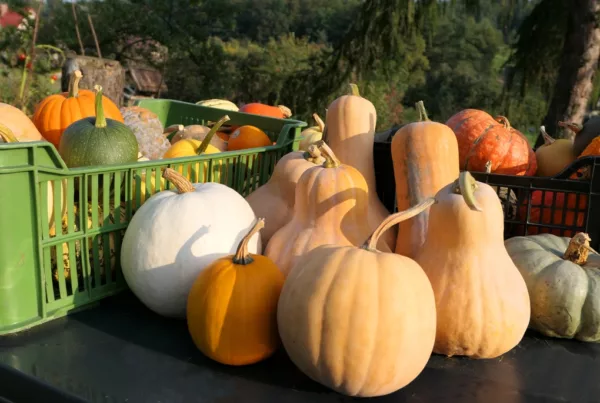Written by Nicole Holland
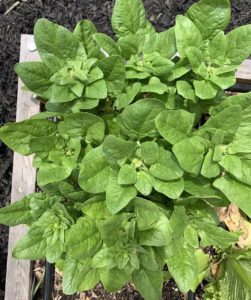 Square Foot Gardens simplify fall crops. And we’re not just saying that because we invented the Method.
Square Foot Gardens simplify fall crops. And we’re not just saying that because we invented the Method.
It’s easy to turn the soil, add another scoop of Mel’s Mix, and replant for fall. And if you’re worried that you’ve already missed your autumn-harvest planting window, you may still have time for crops, like leafy greens, that can be harvested before reaching maturity. Start with this fall planting chart to see what would work best for you.
And while you’re there, check out this list of five of our all-time favorite fall-garden vegetable as well as tips for a fantastic fall harvest.
Tomatoes: Did You Know Fall Is Round 2?
Yes, you can still harvest tomatoes into the fall! In fact, the cooler nighttime air promotes quicker fruit ripening. The key to enjoying a second batch of fall tomatoes is selecting quick-maturing, determinant varieties. Many of us plant indeterminate tomatoes in the summer; their vine-like growing habit will produce fruit throughout the season. But determinant tomatoes are bush-like, grow to a fixed height (usually around 4 feet) and the fruit ripens all at once. However, it’s still a good idea to stake them or plant next to the trellis in your Square Foot Garden for support. Some excellent varieties for a fall harvest are Celebrity, Better Bush, or Early Girl. If you are looking for heirloom or open-pollinated variety, try Rutgers or Roma tomatoes.
Brassicas: Color with Staying Power in the Fall Garden
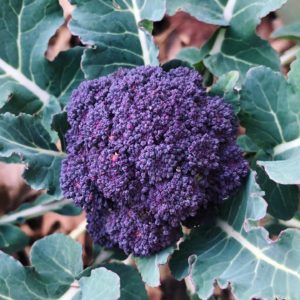 Brassica family of plants includes broccoli, cauliflower, kale, Brussels sprouts, cabbage, kohlrabi, rutabaga, bok choy, turnips, collards and mustard greens. Even radishes and arugula are brassicas! While broccoli and cauliflower can be difficult to grow in the spring (they often bolt too early), autumn’s crisp weather gives us a higher chance of success. Bonus: brassicas offer a lot of color options, including purple broccoli, orange cauliflower, or Red Russian kale.
Brassica family of plants includes broccoli, cauliflower, kale, Brussels sprouts, cabbage, kohlrabi, rutabaga, bok choy, turnips, collards and mustard greens. Even radishes and arugula are brassicas! While broccoli and cauliflower can be difficult to grow in the spring (they often bolt too early), autumn’s crisp weather gives us a higher chance of success. Bonus: brassicas offer a lot of color options, including purple broccoli, orange cauliflower, or Red Russian kale.
The fall garden is also your chance to grow winter radishes like Black Spanish, Watermelon, Daikon, China Rose or German Giant. Winter radishes typically mature in 8-10 weeks and are ideal for long-term winter storage. Psst: don’t forget to harvest the greens for salads and sautés while waiting for the bulbs to mature!
Rooting for These Winners: Beets, Carrots, and Parsnips
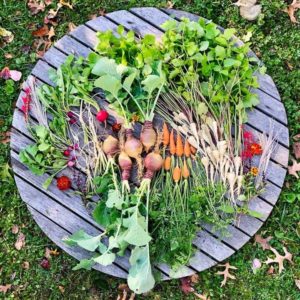 Root crops like beets, carrots, and parsnips are great candidates for your fall Square Foot Garden. The Square Foot Gardening book has advice on how many to plant per square. They come in a variety of colors, perform well in cool weather, and can last for several weeks if stored properly.
Root crops like beets, carrots, and parsnips are great candidates for your fall Square Foot Garden. The Square Foot Gardening book has advice on how many to plant per square. They come in a variety of colors, perform well in cool weather, and can last for several weeks if stored properly.
Have you heard that root vegetables will have a sweeter taste after the first frost? Here’s why: these crops have evolved to survive cold temps by storing energy in the form of starch. When the thermometer drops, the plant converts the starch into sugar which helps prevent cells from bursting under freezing conditions. This not only helps these plants thrive, but it makes them taste better, too. Choose varieties that are better for storing; as long as your Mel’s Mix™ doesn’t freeze you can even keep these crops in your garden beds until you’re ready to harvest. Don’t forget to use a “top hat” for longer varieties!
Growing Lettuce and Spinach in Your Fall Garden
While spinach and lettuce can bolt quickly in the heat, they are easy to grow during the cooler months and don’t take a lot of space in your home garden. You can grow in part shade too. Just plant seeds in your available squares. Once they’ve formed a mature head, use the “cut-and-come-again” method to pick the outer leaves for a continuous harvest all fall and even into the winter.
Some varieties that perform well in heat and cold are Parris Island Cos, Rouge d’Hiver, Marvel of Four Seasons, and Ice Queen. As for spinach, disease-resistant, easy-cleaning Semi-Savoy is a popular home garden variety.
Faster-Growing Legumes Can Be Planted for Fall, Too
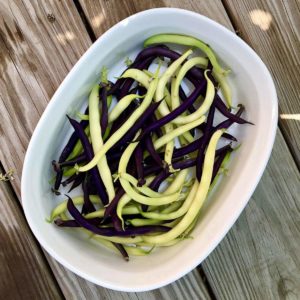 While you may not think of bush beans for a fall garden, they mature so quickly that you can squeeze in a harvest before the weather gets too cold. Give Provider, Gold Rush, or Purple Queen a try. And if you have room on your SFG trellis or want to build one, snap or snow peas are beautiful, nutritious legumes that grow well in cooler weather. Want to something with a bit more color than the standard green? Try the purple Sugar Magnolia snap pea variety in your fall garden this year.
While you may not think of bush beans for a fall garden, they mature so quickly that you can squeeze in a harvest before the weather gets too cold. Give Provider, Gold Rush, or Purple Queen a try. And if you have room on your SFG trellis or want to build one, snap or snow peas are beautiful, nutritious legumes that grow well in cooler weather. Want to something with a bit more color than the standard green? Try the purple Sugar Magnolia snap pea variety in your fall garden this year.



